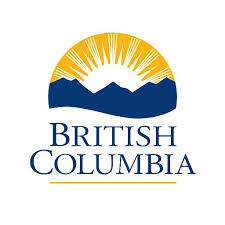Cariboo
Type of resources
Available actions
Topics
Keywords
Contact for the resource
Provided by
Formats
Representation types
Update frequencies
status
-

This polygon dataset identifies the habitat suitability rating for Flammulated Owl (FLOW) within the Cariboo Natural Resource Region. The habitat suitability rating is based on Biogeoclimatic Ecosystem Classification (BEC), forest age class, crown closure, tree species, harvest activity, silviculture activity, slope and aspect.
-

Lake summer survey sites in the Cariboo Region
-

Polygon coverage, based on points coverage created from telemetry and survey data
-

Double line streams from FC1 assigned a stream class
-

Fish Spawning Periods for the Quesnel and Central Cariboo Forest Districts.
-

####Leading Group for the Cariboo Region (pinegroup or firgroup). #### 1. IDF - Fir Group: includes all forest polygons in NDT 4 (IDF and BG biogeoclimatic zones) that meet any of the following criteria: *a) Douglas-fir ( Fd or Fdi) leading or ponderosa pine leading; *b) Lodgepole pine leading, and Douglas-fir ( Fd or Fdi) or ponderosa pine greater than 15% in any inventory layer; *c) Trembling aspen leading, and Douglas-fir ( Fd or Fdi) or Ponderosa pine greater than 15% in any inventory layer, and spruce, red-cedar, cottonwood and birch less than 6% in any inventory layer; *d) No species information in inventory data (usually NSR stands), and inventory type group for pre-harvest stand or the current stand = 1, 2, 3, 4, 5, 6, 7, 8, 29, or 32 These inventory type groups correspond to the following species compositions F, FC, FCy, FH, FS, FPl, Fpy, FL, FDEcid, PlF and Py. If inventory type group=0 and pre-harvest inventory type is not available, classify the polygon as Pine Group. 2. IDF-Pl Group: includes all forest polygons in NDT 4 (IDF and BG biogeoclimatic zones) that do not meet the above definition for IDF-Fir Group.
-

Areas of non-productive forest land in the Cariboo Region. Includes icefields, alpine areas, rock, gravel pits, sand, clay, non-productive brush, etc. From FC1 circa 2002
-

Tourism use polygons of lakes and areas of trails
-

Winter limnologoy (mean oxygen) sites in the Cariboo Region
-

Productive forest land base is defined as the total Crown forest area, determined by subtracting the following from the total area of the Cariboo Natural Resource Region: * All non-Crown land * All Crown land committed to non-timber use through a Land Act designation * All non-forest Crown Land, and * All forest area classified as brush or non-commercial cover in the Forest Inventory. See the CCLUP Land Use Order Implementation Direction for more information: https://www2.gov.bc.ca/assets/gov/farming-natural-resources-and-industry/natural-resource-use/land-water-use/crown-land/land-use-plans-and-objectives/cariboo-region/cariboochilcotin-rlup/cclup_land_use_order_implementation_direction_companion.pdf
 Arctic SDI catalogue
Arctic SDI catalogue